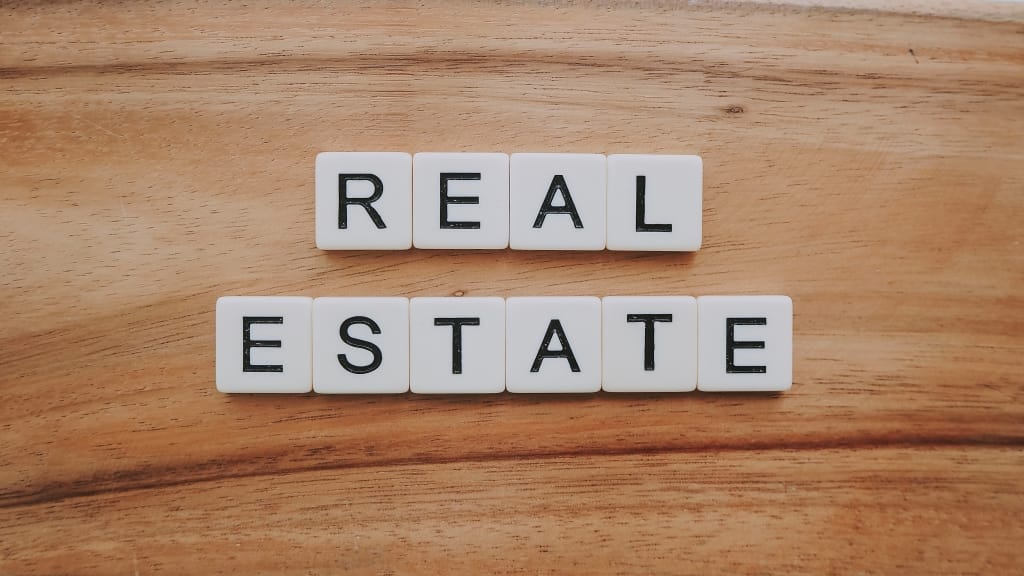


Tips For Selling House As-Is Fast!
Most people selling a property as-is often do so due to emotional or financial distress. When a homeowner finds they can no longer live in the property following the death of a loved one, cannot afford the repairs needed, are in a rush to beat a looming foreclosure or urgently need the cash to meet a large unexpected expense, selling quickly is the most convenient way out.
But selling a home as-is will not automatically lead to a quick transaction conclusion. Selling fast as-is entails taking deliberate steps to get rid of any potential impediments to the process. Here’s a look at some practical tips that can help you do just that.
Full Disclosure
Selling your house as-is means the buyer will take up the property, flaws and all. As the seller, you will not carry out any pre-sale improvements, repairs and renovations. Whether the buyer is an individual or a company like househeroes.com, they will get the house with its problems intact.
An as-is sale has a legal definition in nearly all states. It’s not as simple as a seller handing over the house keys and walking away with a big check. The purchase agreement must explicitly describe the condition of the house in question. The law protects the buyer from waiting to discover the issues after the transaction is concluded.
Ergo, the seller must make all disclosures upfront whereas the buyer is permitted to back out if an inspection finds the state of the property is actually worse than originally stated. To make sure you have all bases covered, obtain a pre-listing inspection. The better armed with the information you are, the less likely of a nasty surprise later on.
![]()
Set a Low Listing Price
When people shopping for a property see as-is on a listing, they’ll immediately assume there’s a major problem with the house, the seller is desperate, that they can close the deal with a ridiculously low offer or all of the above. Often, they are correct.
Thanks to these negative preconceptions, you should set your list price lower than the property’s market value if you want to attract interest quickly. To give you an idea, foreclosed houses in St Louis sell for about 37 percent less than similar owner-sold properties. Since someone selling as-is is keen on closing the transaction quickly, it’s not unreasonable to think as-is buyers will expect a similar discount.
You have to be ok with losing out on the thousands of dollars you would otherwise have received if you made some major repairs before selling. A low price doesn’t guarantee the home will go quickly but it certainly increases the chances of that happening.
![]()
Make Small Renovations
You are determined to sell the property without performing any major renovation or repair. That doesn’t however mean you shouldn’t do any improvements at all. While you certainly want to dispose of the property quickly, you should target the best possible price you can get for it. A dilapidated house that’s falling apart will attract ridiculously low offers.
If you are not going to do anything else, make sure you carry out some basic work that will increase the property’s curb appeal. It could cost as little as a hundred dollars but can have a substantial impact. Thoroughly clean the house, mow the grass, water the lawn, plant flowers or apply a new coat of paint to the exterior walls. This will draw more interest to the house and pay off via a better sale price.
A home is the average American’s single largest investment. Naturally, you’d want to obtain the maximum possible return when you put it up for sale. Unfortunately, the condition of the house, the state of your finances and safeguarding your emotional wellbeing won’t always make this possible. Selling as-is is sometimes the most viable path to cutting your losses, making a recovery and starting afresh. Follow this tips to conclude your as-is sale fast.

Renting: The First Step Towards Home Ownership

Let’s You Try Before You Buy
Renting is the perfect opportunity to essentially try living on your own before you tie yourself down to a home. In addition to making sure you actually are ready to live on your own and buy a home, renting allows you to find out if the city, town or neighborhood is really right for you. If you buy a home in a city you think you like, only to find out there is nothing there for you, you can’t just wait until your lease is up and leave.You will be stuck there for decades unless you sell or rent out the home. Both of which can take a lot of time, work and money. Finding places to rent in your area is incredibly simple, especially if you use a site like https://theurbanavenue.com/ to find available rentals in your city. As a result, trying out any area you want by renting is simple and will save you from buying in the wrong place.
Train Yourself to be a Homeowner
If you have only lived with your family, there is a good chance you haven’t always been as responsible as you should. Your costs were likely low and if you screwed up, the consequences weren’t likely that dire. If you have your own place and are responsible for it, there are major consequences if you can’t pay your bills or mortgage. Renting gives you a chance to essentially find out what it’s like to have more responsibility, without quite being fully exposed to it. For example, when you rent a place, you will have bills to pay, but likely won’t be responsible for things like repairs. It gives you a taste of what it’s like to own a home, without exposing you to the same costs and risks. By renting first, you give yourself time to work on your budgeting, get your credit score right, and even learn how much you can afford to spend. Essentially, renting can train you on what it’s like to be a homeowner.Allows You to Take Time to Find the Right Home
If you are moving out of your families home and immediately want to buy a home, there can be a lot of pressure to do it quickly. However, a home search isn’t something that you want to rush. You need to take time and make an informed decision. By renting, you will have a couple of months to really put time into what you want out of a home, and what things you don’t. Sure, it will cost you money to rent. But a few months of rent is nothing compared to what you might lose if you end up buying the wrong home and being stuck there for decades. Big decisions should have a lot of time put into them, and buying a home is one of the biggest decisions you will ever make. In conclusion, renting is a great first step towards home ownership. We hope this article has been able to show you why.
In conclusion, renting is a great first step towards home ownership. We hope this article has been able to show you why.
Subleasing: Pros And Cons For Landlords
Is Subleasing Worth It?
As a landlord, there is much to manage, and much to think about. Property must be maintained, taxes must be handled, tenants must be evicted, and tenants must be acquired. Many landlords are strategic: they’ll allow one of their tenants to live in the property rent-free provided they help manage the premises. This isn’t feasible if you’re a landlord of a smaller property; it’s something more common to larger rental arrangements. However, the value such a tenant can bring is actually quite considerable. Rent in many parts of the country is around $800 a month—barring places like Los Angeles, where a shack in a basement is well over a thousand dollars for a single renter.In a thirty-one day month, you’re looking at $25.81 a day. For $25.81 a day, someone who pays their rent by working for you can get a lot done. If they just spent two hours a day changing light bulbs, weeding, taking out trash, or cleaning minor messes, you’re saving money as a landlord. $12.91 an hour isn’t a rate most maintenance people will take; especially if you’re only paying them $800 a month. However, someone who lives for free on the premises provided they do two hours of chores five days a week will be more than happy to do so. You might even get more work out of them, depending. It’s a win-win for everyone. Similarly, as regards subleasing, you can find a win-win—but there are pros and cons. This writing will explore them.Pros Of Subleasing
If you approach subleasing right, you can be more sure you’ll get rent on time from tenants. Consider the scenario where rent is around $800 a month. At this website, https://www.umovefree.com/City/frisco-apartments-tx/, you can find rental units that start at only $796 a month. Now imagine that’s divided two or three times between people in one unit.You’re looking at between $265.33 and $398 a month for a $796 single, depending on if the unit is sublet two or three times. That’s pretty darn affordable. At the $265 rate, it’s just a little under $9 a day. At the $398 rate, it’s a little under $13 a day per person. That’s cheaper than lunch. It’s quite affordable. You’ve just got to approve those in a sublet scenario.Something else that can be done is a slight rent hike. Say your unit was generally $800 a month for a single tenant. Pop that up to $1,000 if there are two living there, and you make an extra $2,400 a year, while the tenant subletting the property gets an even better deal.Cons Of Subleasing
If you don’t vet those your tenants are dividing up their unit with, there could be some real trouble. Sometimes a tenant starts subletting their unit because they themselves are low on resources. Now you’ve got two people who are broke on your premises, compounding wear and tear while making late payments.There can also be some legal considerations. What if the person seeking a sublet opportunity is a fugitive from another state? You’ve got to have an apparatus in place which will allow you to vet whoever is on your premises. If you don’t, and that individual is found out, there could be a legal case to be made that you aided and abetted a fugitive.Certainly this wasn’t your intention or expectation, but the right lawyer can do a number on an honest man. When you’ve got disorganized subletting solutions, you increase such risks substantially—by a factor of two, if you allow subletting across your premises.Even good tenants who open up their units to those who can be trusted will still increase normal wear-and-tear. Also, sometimes pets show up when you’re not intending them to in such situations. That’s also quite bad for your building’s longevity.Making The Right Choice
To sublet, or not to sublet? It’s quite a question! The truth is this: provided you put an apparatus in place which vets those who are paying your tenant rent, you should be okay. Just assure you’re not letting any fugitives in, and that those renting from one of your renters aren’t destroying the premises.If you play your cards right, such options can allow you to make more money from a single unit, and assure that payment maintains regularity over the long-run. If you don’t, you’ll see more wear and tear, as well as the possibility of legal issues. At the end of the day, whether or not these things are a deal-breaker is your call.
What The Future Brings: The Impact of Technology on Commercial Real Estate
Technological, social, and economic challenges of the future will change the way people live, work, and shop. These changes can significantly impact today’s climate, not just in residential, but in the commercial real estate sector as well and its portion of the value chain. The ultimate question is who will profit and who will lose money in the future world of commercial Real Estate.
What can we expect?
The present evolution of technologies towards digitization and automation will cause massive changes within the industry. The job profiles that exist today will change, along with the clients’ demands on how the job is executed. There will be an increase of redundant low-skilled, blue-collar workers while, white-collar jobs will be more driven by data, performed remotely, which will impact the need for office spaces, as well as functional office design and furnishings. These developments promise to reshape the commercial real estate environment.
![]()
The future is mobile
With autonomous cars just around the corner, we can expect major changes to the ways cities are built and developed. Property managers will have to evaluate how they use space. The decreased need for parking spaces both on and off the street will free up large areas for development. In some cities, landlords are converting parking space into commercial real estate, taking advantage of the premium location and street-level access. The new space requirements will include re-configured parking solutions for driverless cars and warehouses for automated loading machines.
Tenant health and wellness
As global environmental concerns are gaining momentum, people are more concerned about the impact of commercial spaces on their health and wellness. A global 2016 survey by Deloitte that targeted the Millennial population showed that young professionals consider employee well-being as one of the most important qualities of a workplace. To meet these demands, companies are considering how to improve the health and well-being of their commercial tenants and residents. The overall prediction is that commercial properties that don’t meet the needs of modern tenants won’t see modern tenants. The survey analysis recommends that real estate companies should include tenants in decision-making, so they can better understand design elements that cater to health and wellness.
Rise of smart energy products
With the UN predictions that the world population will reach 9.7 billion in 2050, over 66% will live and work in cities. As a consequence, commercial places will have to become increasingly urbanized with unprecedented integration of smart technologies, drones, autonomous vehicles, and automated services. The modern urban architecture will rely heavily on smart energy products like industrial lighting solutions shown here, as well as on data and technology to make life more comfortable. As a result, the cost of both commercial and residential real estate is expected to rise in those districts.
3D printing
We won’t have to wait long before builders are able to print entire floors with immense time savings. In China and Dubai, there are already low-rise commercial properties being developed with 3D printing, and the builders are reporting construction time reduced by 70% and cost by 80%. With its huge implications for construction, 3D printing is both a threat to traditional warehousing, as less space will be required, but also an opportunity for retailers to respond on-demand.
Event-driven shopping
The rapid increase of online shopping will further reduce demand for retail real estate assets, with more demand for just-in-time logistics. Amazon is already experimenting with drone delivery service, claiming it’s much safer and faster than going through couriers or postal service. This way, logistics centers could be located at the periphery, freeing more space in the city center. Upper-end high street miles will still exist, primarily through the leisure PR function, but smaller retail businesses in decentralized regions will suffer the heaviest blow. To meet the demands of new customers and build interest, shopping malls will need to resort to more event-driven concepts that emphasize on experience rather than shopping.
![]()
Fading relevance of real estate brokers
As individual market players in the real estate arena, real estate brokers will become increasingly redundant due to market transparency policies and automated rental negotiations between owners and lessees. Real estate transactions will be based on technologies like blockchain, which eliminates the need for the middle-man. On the other hand, the government won’t miss an opportunity to benefit from new developments through new tax models, such as a tax for automation. Part of this income will be much needed for mitigating social problems due to increased unemployment, which is a result of automated processes. Although the future banks will certainly take advantage of the high degree of debt financing for real estate projects, crowdfunding platforms will take their share as strong competitors to traditional banking.
The word ‘smart’ has changed slightly in meaning over the last decade, as new technologies granted us even more features that help us manage our lives. The increasing automation of running the business will bring profound changes in the commercial real estate sector, that go far beyond smart buildings and shared workspaces.

